The Big Picture
- The Outlaw faced censorship due to its sexual content, but Howard Hughes used publicity stunts to generate controversy and commercial success while working to defy the Hollywood Production Code Administration.
- The film’s star, Jane Russell, improvised her look to achieve the desired cleavage and comfort, outsmarting Hughes and his custom-made bra that was painful to wear.
- Compared to more recent provocative scenes in today’s films, The Outlaw‘s “bust scene” seems tame, highlighting the changing nature of censorship in Hollywood.
It might seem absurd today, but there was a period in Hollywood when the choice of bra that an actress wore on set could determine the fate of a film. In the early 1940s, at the height of the Hays Code, when Howard Hughes made The Outlaw, this was very much the case. During that time, some filmmakers in Hollywood were embracing overt sexuality to captivate audiences. Jane Russell, the film’s lead actress, in her feature film debut, was expected to embody this trend. Together with her future friend Marilyn Monroe, they would become the quintessential representation of screen sirens of the 1940s and 1950s. Hoping to further emphasize Russell’s voluptuous figure, including her bust, director Hughes decided to have a custom-made bra made to accentuate her bosom and add to her sexuality. However, this proved to be a hard sell for the censors, and The Outlaw became another Western that couldn’t be approved.
Hughes was forced, despite his vocal objections, to edit out parts of the film. Interestingly, Russell claimed in her autobiography that she never actually wore the custom-made underwire bra, finding it to be uncomfortable. The controversy surrounding the censors’ disapproval delayed the film’s worldwide release until 1946, but when it finally hit the theaters, The Outlaw became a box office hit. However, to the censors, Russell, as the film’s heroine, Rio McDonald, was the literal outlaw in cinema.
The Outlaw
Western legends Pat Garrett, Doc Holliday and Billy the Kid are played against each other over the law and the attentions of vivacious country vixen Rio McDonald.
- Release Date
- November 7, 1946
- Director
- Howard Hughes , Howard Hawks
- Cast
- Jack Buetel , Thomas Mitchell , Jane Russell , Walter Huston
- Rating
- G
- Runtime
- 116 minutes
- Main Genre
- Western
- Genres
- Western , Drama
- Writers
- Jules Furthman , Howard Hawks , Ben Hecht
What Is ‘The Outlaw’ About?
The Outlaw is a riff on real-life Wild West figures: Billy the Kid, lawman Pat Garrett, and gunslinger Doc Holliday. The film explores the intertwining relationships between these three fictionalized characters and a young woman named Rio McDonald (Jane Russell). The plot is simple. Sheriff Pat Garrett (Thomas Mitchell) is overjoyed to learn that his old friend Doc Holliday (Walter Huston) is heading to Lincoln County, New Mexico. Doc is on the trail of his stolen horse, which he discovers in the possession of Billy the Kid (Jack Buetel), a man Garrett despises. Initially, tension simmers between the two famed gunmen, but they eventually develop a strange alliance, much to Garrett’s dismay. Rio, Doc’s girlfriend, attempts to avenge her brother’s death by killing Billy the Kid, but she is overpowered.
In a subsequent altercation pitting Billy the Kid and Doc against Garett, the lawman shoots Billy the Kid before Doc kills some of Garrett’s men. Doc hides the injured Billy at Rio’s place, where she nurses him back to health instead of carrying out her revenge. In the process, Rio falls in love with Billy the Kid, and they become rather intimate. Doc learns about the forbidden love triangle, which complicates his relationship with Billy the Kid. However, as outlaws on the run, they decide to momentarily put their differences aside and focus on their escape.
How Jane Russell Attracted the Wrath of Censors in ‘The Outlaw’
Jane Russell starred in several films, most remarkably alongside Marilyn Monroe in Howard Hawks‘ 1953 musical Gentlemen Prefer Blondes, but her debut role in The Outlaw remains her most defining performance. Howard Hughes, captivated by the allure of bombshell characters, embarked on a nationwide search for a full-figured actress to portray the role of Rio. His quest led him to the then-teenager Russell, whom he entrusted with the role. As per Russell’s autobiography, instead of wearing the Hughes-designed bra, she improvised by padding the cups with tissue and tightening her bra’s shoulder straps — something she shared in an interview with Ron Russell (no relation) before she died in 2011. That way, she achieved the desired cleavage that Hughes was looking for and, in the process, outsmarted him. “I never wore it in The Outlaw, and he never knew. He wasn’t going to take my clothes off to check if I had it on. I just told him I did,” Russell said, as quoted by writer-filmmaker George Tiffin’s book, A Star is Born: The Moment an Actress Becomes an Icon. According to The New York Times, the designed bra would later end up in a Hollywood museum.
Hughes completed filming The Outlaw in February 1941 but couldn’t secure approval for the film’s release. The Hollywood Production Code Administration cited the film’s prominent display of Russell’s breasts as the primary reason for denying approval. Hughes reluctantly agreed to cut out a few shots, but the censors remained dissatisfied. In the film’s story as well, Hughes attempts to sexualize a scene in which Russell’s character is overpowered by Billy the Kid, whom she had attacked. In the scene, he shows shadows of an ensuing battle between the two on the floor, in what appears to be rape. Amid the drama, 20th Century Fox, which had entered an agreement to distribute The Outlaw, threatened to cancel the deal. Defying the censors, Hughes proceeded with a theatrical release of the film in 1943 without approval, but the run was short-lived as the film was recalled due to its violation of the production code.
Despite being her debut role, long before The Outlaw‘s release, Jane Russell had already become a household name, largely due to Howard Hughes’ sexualized publicity stunts. According to archivist Christina Rice, author of Mean, Moody, Magnificent: Jane Russell and the Marketing of a Hollywood Legend, Hughes deliberately entangled Russell in the film’s prolonged release drama. Rice recounts that Russell was repeatedly summoned to studios for provocative photo shoots designed to promote the film. The result was a series of “haystack pictures,” shot by renowned Hollywood photographer George Hurrell, which were strategically edited to exaggerate Russell’s sex appeal for public consumption. These photos earned Russell the unflattering moniker “the motionless picture actress.” Rice asserts that these publicity stunts, centered on Russell’s sexuality, were deeply uncomfortable for the actress.
She was particularly humiliated by the gigantic, suggestive billboards of her that were erected ahead of the film’s premiere in San Francisco. There were widespread demands across the city to have the alluring billboards removed, and the San Francisco Film Board petitioned the PCA to force their removal. In an interview with celebrated show host and comedian Joan Rivers, Russell expressed regret over what transpired with the film’s publicity, stating that if the hand of time rolled back, she would rather go back to the ranch than be part of it.
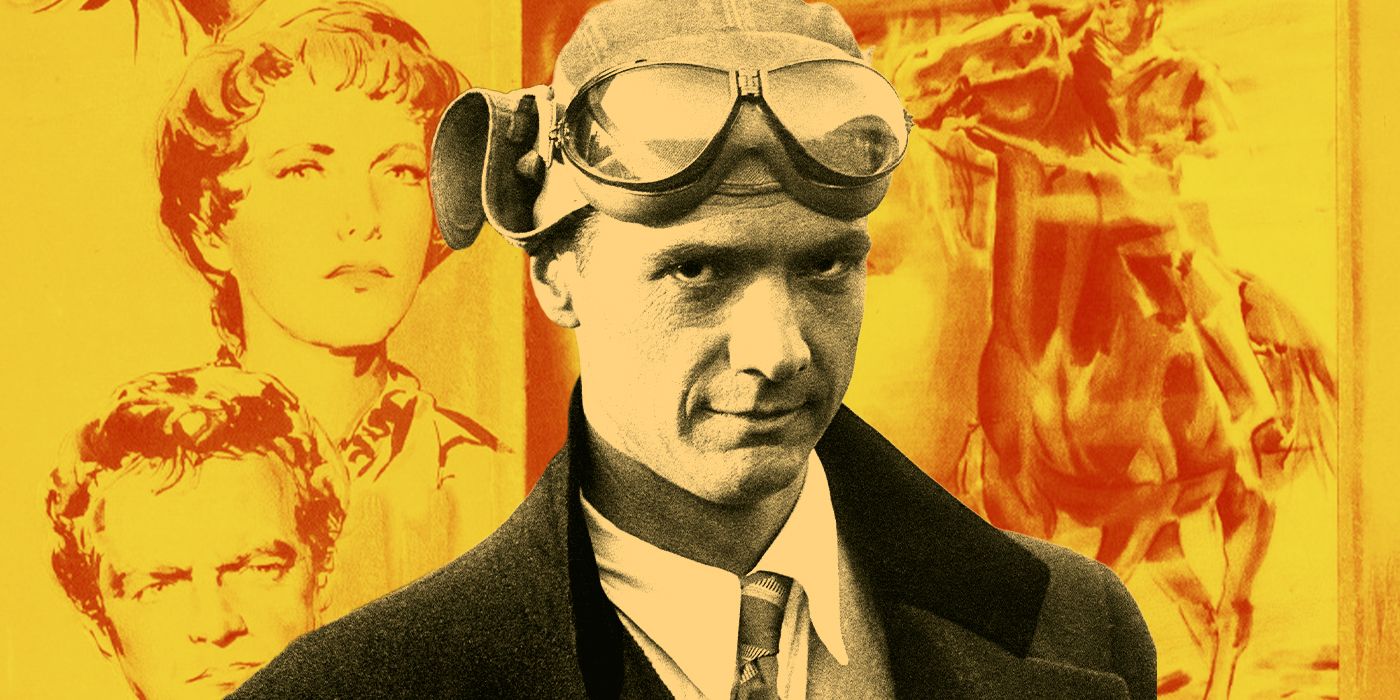
Howard Hughes Is Why Paramount Turned a B-Movie Into an Oscar-Winning Western
Paramount was sure this iconic Western was a B-movie, and boy were they wrong.
Hughes, seeking to capitalize on the film’s notoriety, devised a publicity stunt to generate buzz. He enlisted the assistance of publicist Russell Birdwell, who had successfully worked on the promotion of Gone With the Wind, the highest-grossing film ever when adjusted for inflation. Fearing financial losses due to the film’s denial of approval, Hughes instructed his team to orchestrate public outcry and protests against the film’s perceived nudity, hoping that the ensuing controversy would heighten demand for the movie. The Outlaw was finally widely released in 1946 without the approval of the MPAA to great commercial success. There were protests and bans of the film across the country, but also, as Hughes hoped, there was growing interest in the film. As per entertainment professor Gary R. Edgerton’s journal, Westerns: The Essential ‘Journal of Popular Film and Television’ Collection, the film raked in $3 million that year, with its lifetime earnings surpassing the $5 million mark.
Jane Russell’s Scenes in ‘The Outlaw’ Pale in Comparison to Modern Films
While The Outlaw might have caused a stir during its release, the film pales in comparison to some of the more raunchy films released after the Hays Code. Even the sexually mild Salma Hayek and Penélope Cruz‘s gorgeous baddie heist partnership in the 2006 Western, Bandidas, surpasses The Outlaw’s raunchiness. The film follows the two stars’ characters as they learn and put into practice how to rob banks and carry out heists, including using their feminine charm to outmaneuver their victims. In one scene, they tie up a man naked on the bed and conduct a bawdy photoshoot with him. Away from Western movies, Sharon Stone‘s interrogation scene in the 1992 neo-noir erotic thriller film Basic Instinct would cause the censors of The Outlaw insurmountable distress. In the scene, Stone sits across the room before an all-male interrogation team while crossing her legs to reveal just enough to pique their interest. She lights up a cigarette, and when one interrogator tells her that smoking is not allowed, she replies, “What are you gonna do, charge me with smoking?” before going ahead to “smoke them out.” As if the earlier provocation isn’t enough, she continues to defy the normative cishet-white male standards of conversation.
Unlike Jane Russell’s Rio who is looking for approval from men in her life, Stone’s character in Basic Instinct manages to turn the tables on men interrogating her, and it is clear she is the one in charge. More recently, scenes that don’t even get much attention, such as Napoleon‘s Josephine’s (Vanessa Kirby) “You will always want it,” still dwarf The Outlaw‘s “bust scene” on sexual provocation. A clear indicator of how times have changed.
The Outlaw‘s story is a fascinating one that highlights the power of publicity and the changing nature of censorship in Hollywood. The film’s controversy and Hughes’s savvy marketing stunts helped to make it a commercial success, but it also raised important questions about the objectification of women in cinema. While the Hays Code may have been overly restrictive, Jane Russell’s experience throughout the film’s marketing scores some points for the restriction as a way to protect actresses like her. The Outlaw‘s “bust scene” may seem tame by today’s standards, but it was considered shocking and controversial in its time.
The Outlaw is available to watch on Plex.
Watch on Plex

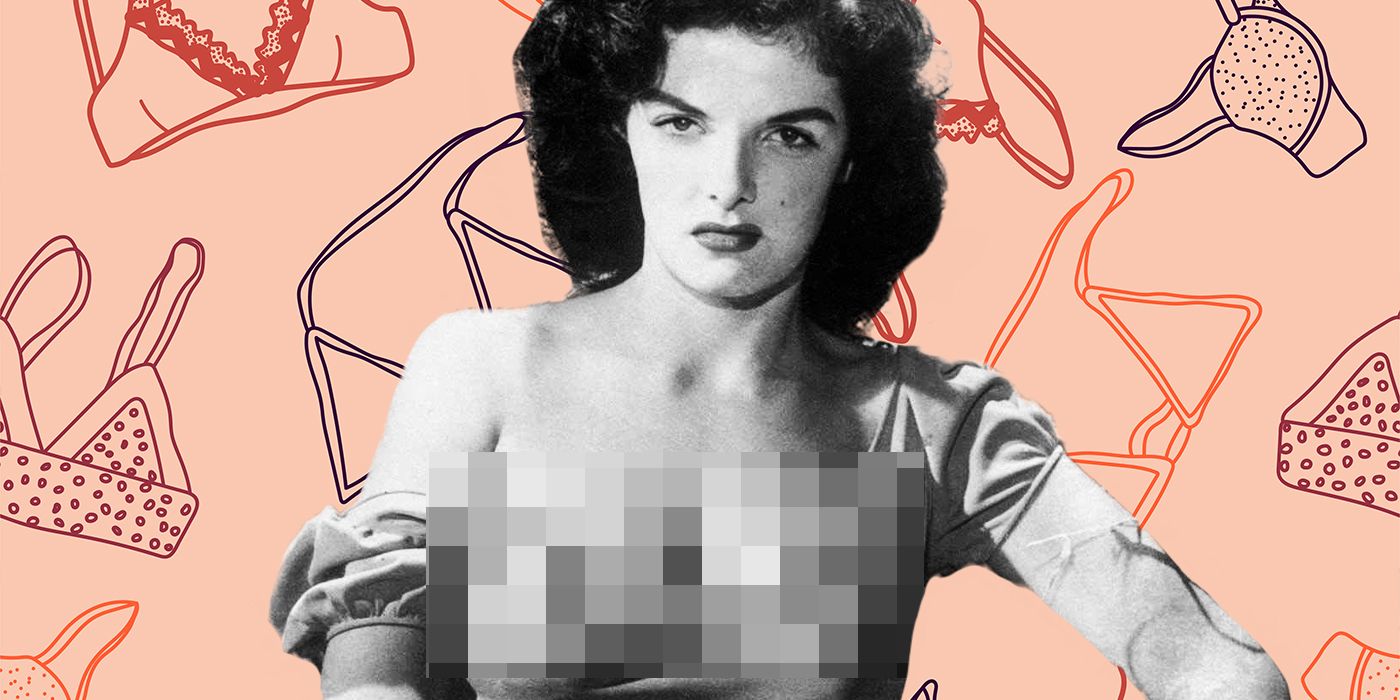
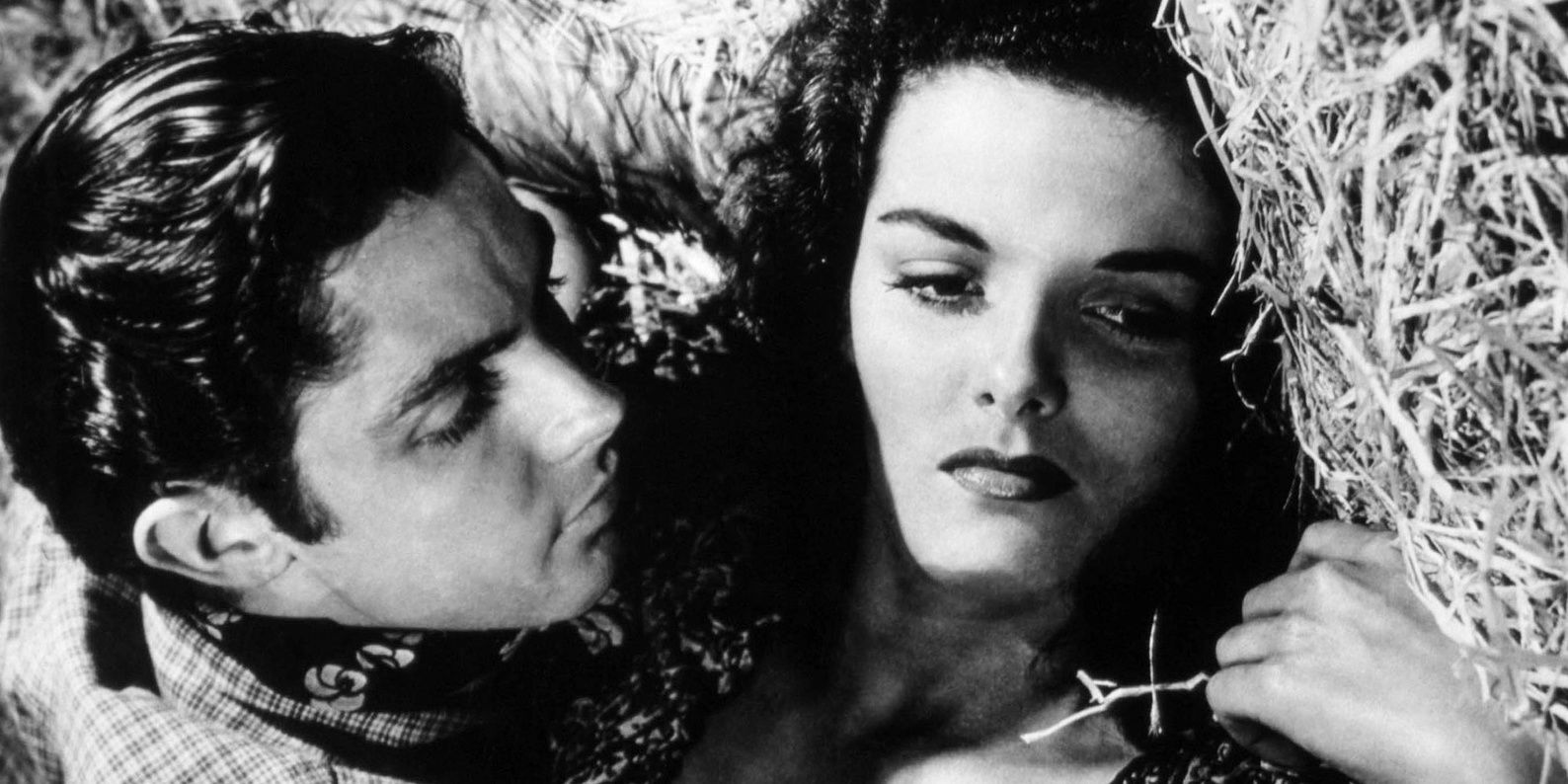
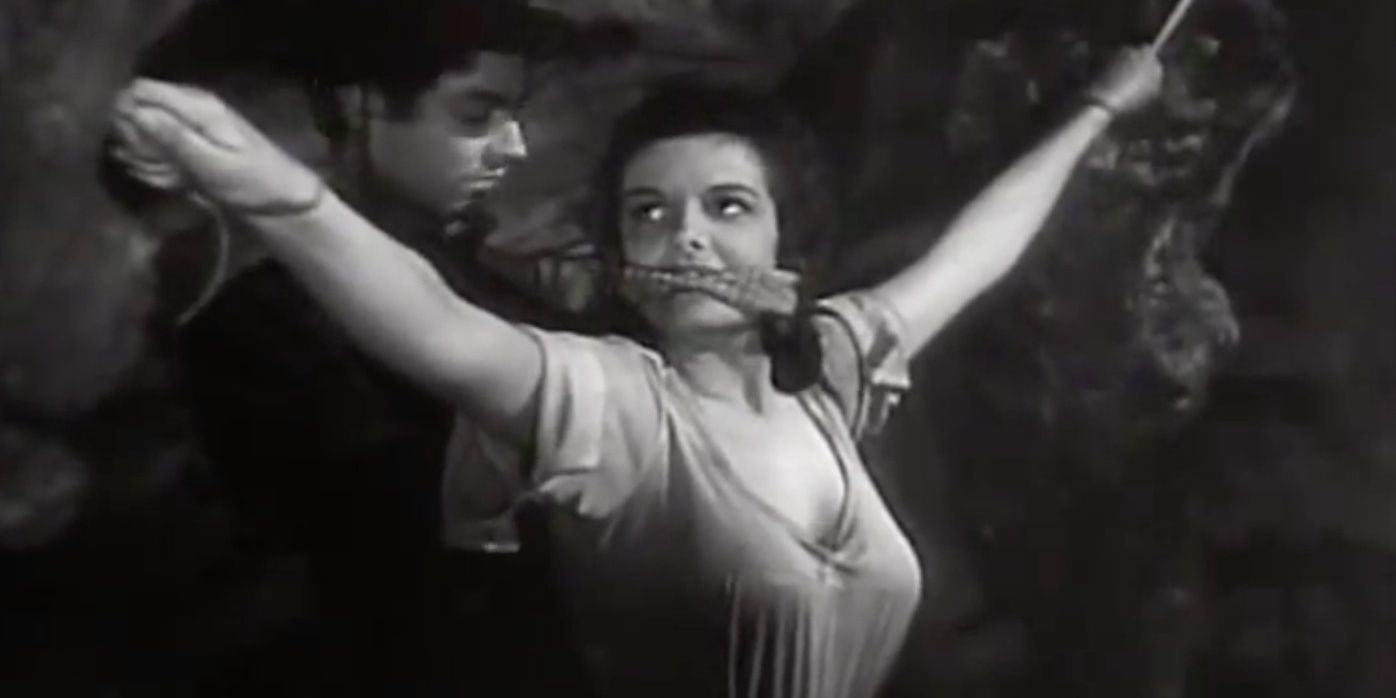
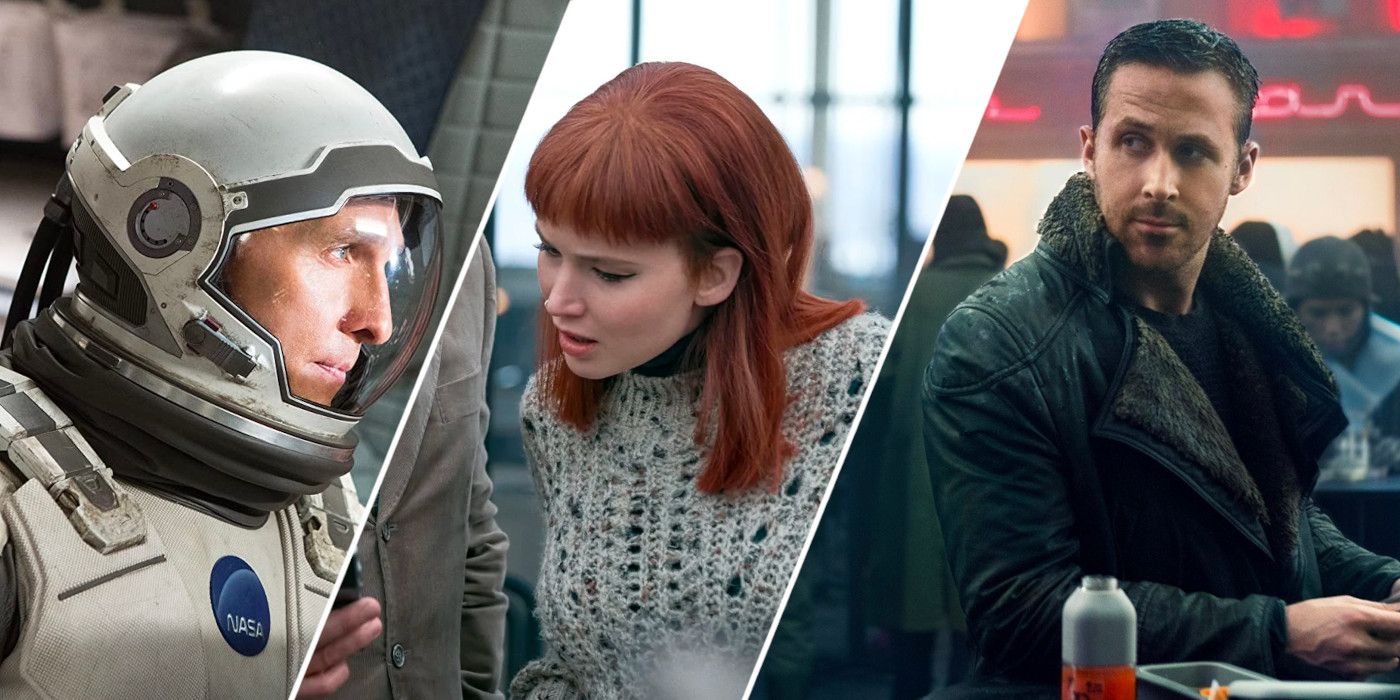
-feature.jpg)
